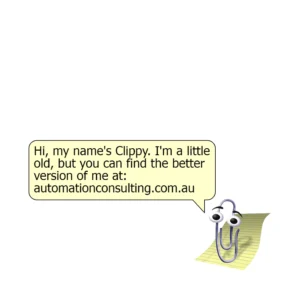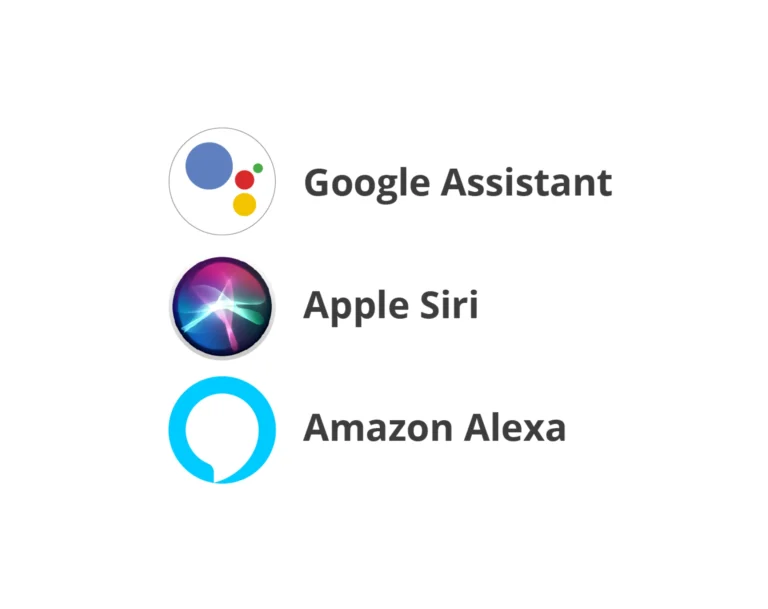From Clippy to Companions: The Evolution of Artificial Intelligence in Consumer Psychology

Angelie Pelayo
Digital marketing analyst skilled in Marketing, Automation, AI, CRM, and Technology. Assertive advocate within human rights organisations, with prior experience in people management and training. Specialised in tools like FlowTrack and various automation software, alongside proficiency in telecommunications tools.
Welcome to another engaging exploration on our AC Insights blog. In today’s edition, we’re embarking on a fascinating journey through the evolution of AI and chatbots. This adventure takes us from the simple digital tools of the past to the sophisticated, conversationally adept companions of the present.
Our focus? Anthropomorphism. Fancy word, right? It’s all about giving human characteristics to non-human things, and it’s been a game-changer in how we interact with tech. We’re going on a journey from the early days of Clippy (yep, that eager little paperclip from Microsoft Office) to the slick, smooth-talking likes of Siri, Google Assistant, and Alexa. Get ready to uncover how these digital buddies have evolved from quirky novelties to indispensable parts of our daily routine.
The Allure of Anthromorphism
Anthropomorphism has played a key role in making technology more user-friendly and relatable. It has allowed us to form emotional connections with our devices, making it easier to integrate them into our daily lives. These digital assistants have become more than just tools to help us accomplish tasks – they have become companions, offering us assistance, companionship, and even entertainment. We have developed a sense of trust and familiarity with them, allowing us to delegate tasks, receive information, and even engage in casual conversation.
As technology continues to advance, we can expect to see even more sophisticated and human-like interactions with our digital companions. The line between human and non-human is becoming increasingly blurred, and anthropomorphism is at the forefront of this evolution. So, get ready to witness the next chapter in the story of anthropomorphism and its impact on our relationship with technology.
The Early Days: Clippy's Rocky Reception and Legacy
 Rewind to the late ’90s – a time of boy bands, frosted tips, and Clippy. Remember that little animated paperclip that popped up in Microsoft Office? It was Microsoft’s way of making word processing a bit more, let’s say, ‘interactive’.
Rewind to the late ’90s – a time of boy bands, frosted tips, and Clippy. Remember that little animated paperclip that popped up in Microsoft Office? It was Microsoft’s way of making word processing a bit more, let’s say, ‘interactive’.
With its goofy eyes and chirpy “It looks like you’re writing a letter” routine, Clippy was a bold step into humanizing technology. But, as many Microsoft Office users can attest, Clippy wasn’t exactly met with open arms. In fact, it became the source of much annoyance and frustration. Its unsolicited interruptions and often unhelpful suggestions quickly led to a widespread dislike of the little paperclip.
Despite its rocky reception, Clippy has become a nostalgic symbol of the tech industry in the late ’90s and early 2000s. Its brief stint as an office assistant may not have been a smashing success, but it did pave the way for future developments in interactive technology.
In the end, Clippy may not have been the star of the show, but it certainly left a lasting impression on those who remember its animated antics. And although it may be long gone from our computer screens, its legacy lives on as a quirky reminder of a bygone era in the ever-evolving world of technology.
In a fascinating interview with Great Big Story, Clippy’s creator, Kevin Atteberry, shared the vision and challenges behind this little character. Clippy wasn’t just a tool; it was a foray into blending AI with a personality. Sure, it had its flaws – popping up uninvited, offering advice you didn’t ask for – and ended up being a bit of a Marmite situation: you either loved it or hated it.
Atteberry explained that the concept behind Clippy was to create a helpful and friendly assistant to guide users through the complexities of Microsoft Office. The challenge, however, was to strike the right balance between being helpful and intrusive. Atteberry admitted that they may have missed the mark on this, as Clippy often interrupted users at inconvenient times or offered irrelevant advice.
Despite the mixed reception, Atteberry emphasized that the intention behind Clippy was to humanize technology and make it more approachable. He believed that giving AI a personality could make it easier for people to interact with and understand. In many ways, Clippy was ahead of its time, as modern AI assistants like Siri and Alexa now embody similar principles of blending AI with personality.
Looking back, Atteberry acknowledged that Clippy may not have been perfect, but it was an important experiment in the evolution of AI and user interface design. And while Clippy may not have been universally beloved, it certainly left a lasting impression on the world of technology. A pioneer, an early icebreaker in getting us used to the idea of AI in our software.
Transition to SmarterChild: A New Era of AI Chatbots
Fast forward to the early 2000s and enter SmarterChild. This wasn’t your annoying office assistant – this was a whole new ball game. SmarterChild was like the cool, older cousin of Clippy, capable of actual conversations that didn’t feel like you were talking to a broken record.

This chatbot was a big leap in AI communication. It was more about engaging in meaningful chit-chat than just spewing out canned responses. SmarterChild was like a glimpse into the future, showing us the potential of AI to not just assist but actually interact. Yes, SmarterChild was definitely ahead of its time in terms of AI communication. It was able to hold conversations and provide information in a way that felt more natural and engaging. It’s exciting to see how far AI communication has come since then, and it’s only going to continue to improve in the future.
But let’s not sugarcoat it – SmarterChild had its share of hiccups. Understanding the complex soup of human emotions and contexts wasn’t its strongest suit. This often led to some pretty hilarious interactions, with users pushing its buttons just to see what would happen. For example, if you asked SmarterChild about a sensitive topic like a breakup, it might respond with an overly cheerful and insensitive comment, completely missing the emotional nuance of the situation. And if you tried to engage it in a philosophical debate, it would often struggle to keep up with more abstract or nuanced concepts.
Despite its shortcomings, SmarterChild was an important milestone in the development of AI chatbots. It paved the way for more sophisticated and empathetic virtual assistants that are now a common feature in our daily lives. And for many users, the quirks and limitations of SmarterChild only added to its charm, making it a memorable and beloved part of the early internet experience.
Psychological Dynamics: Public Reaction to SmarterChild
The public’s reaction to SmarterChild was a mixed bag of fascination and skepticism. For some, it was a novel toy – a digital pal to shoot the breeze with. For others, it was a chance to test the limits of this new AI creature.
This whole thing highlighted an interesting aspect of our relationship with AI: we tend to treat these digital entities like they’re human, projecting our feelings and expectations onto them. SmarterChild became a canvas for our curiosity, our need to push boundaries, and sometimes, our desire to mess with something just because we can. As AI continues to advance and become more integrated into our lives, it’s important to remember that these digital entities are not human. They may be designed to mimic human behavior and provide personalized responses, but ultimately, they are still just machines following programmed instructions.
It’s important to approach AI with a sense of skepticism and understanding of its limitations. While it’s fascinating to interact with AI and see how it responds to different situations, we must also remember to treat it with respect and not use it for malicious purposes.
Our relationship with AI will continue to evolve as the technology advances, but it’s crucial to maintain a level of awareness and responsibility in how we interact with these digital entities. As much as we may anthropomorphize AI, it’s important to remember that they are not human and should be treated accordingly.
The Rise of Modern AI Assistants: Siri, Alexa, and Google Assistant


